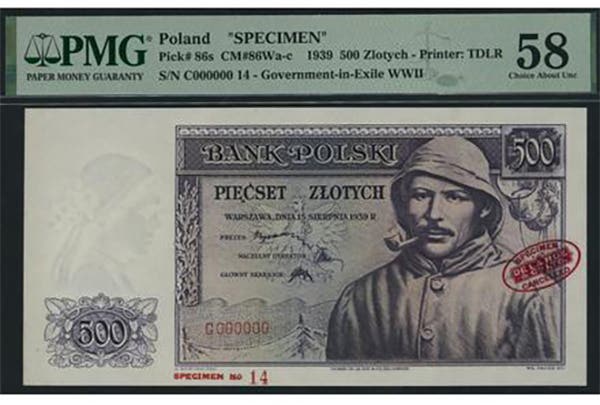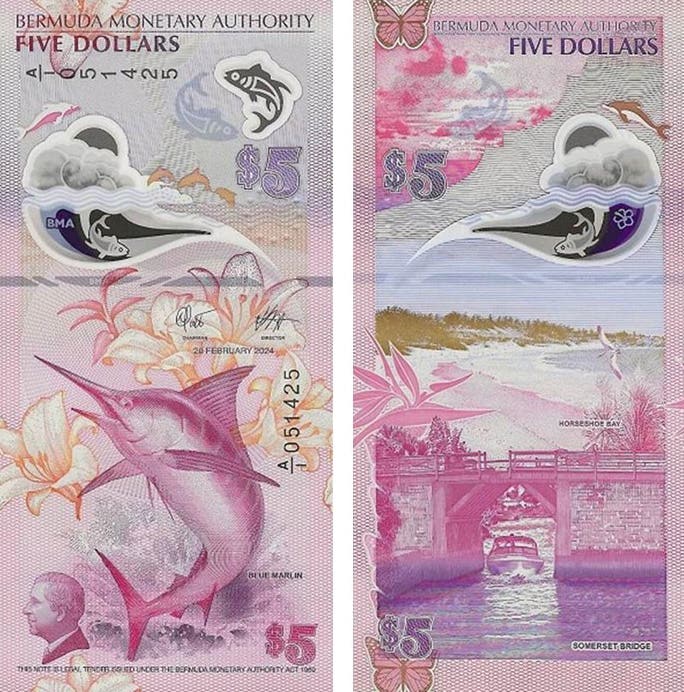Bank of England unveils new £5 note
By Kerry Rodgers On June 3 the Bank of England unveiled its long-awaited, new £5 note. Many months have elapsed since the “concept” showing Winston Churchill was announced. We can…
By Kerry Rodgers
On June 3 the Bank of England unveiled its long-awaited, new £5 note. Many months have elapsed since the “concept” showing Winston Churchill was announced. We can now compare that concept with images of the final product due for release on Sept. 13.
The note is the first polymer issue of the Bank of England. It is being touted as “Cleaner. Safer. Stronger.” In unveiling the completed design at Blenheim Palace, Churchill’s birthplace and ancestral home, bank Gov. Mark Carney observed, “The strength of the polymer material means that The New Fiver is expected to last at least 2.5 times longer—around five years—even after being folded into wallets and scrunched up in pockets.”
Churchill, of course, occupies the back of the note. Queen Elizabeth II continues to reign supreme on the face.
And Her Majesty hasn’t aged a bit in the past 26 years. Her portrait remains that used on the 1990 Series E notes. There is not one extra grey hair. She still sports, “Granny’s Tiara.”
That same portrait features in one of the new note’s many security features: a see-through window at left face—and back right. The window’s border changes from purple to green.
Other security features include the Elizabeth Tower, aka Big Ben, in gold foil on the face and silver on the back, a hologram that contains the word “Five’”and changes to “Pounds” when the note is tilted; a second hologram of St. Edward’s crown that appears three-dimensional and multi-colored when the note is tilted; a green foil hologram of the center of the Blenheim Palace maze, Churchill’s birthplace and ancestral home; and “Bank of England” printed in intaglio along the note’s top. Micro-lettering is present beneath the queen’s portrait.
On the back the portrait of Churchill comes from a photograph taken by Yousuf Karsh on Dec. 30, 1941. Behind is a view of Westminster and the Elizabeth Tower from the South Bank looking across Westminster Bridge. The hands of the Great Clock in the Elizabeth Tower stand at 3 o’clock—the time on May 13, 1940, when Churchill declared in his first speech as prime minister: “I have nothing to offer but blood, toil, tears and sweat.” This declaration is quoted beneath the portrait. In the far background is an image of the Nobel Prize medal for literature awarded to Churchill in 1953, along with the wording of the prize citation.
All the new polymer notes will retain tiered-sizing and includes the bold numerals and similar color palettes to the current notes. This will assist people distinguish between denominations and be of particular use to those with vision impairment.
In addition the new polymer £10 and £20 notes will have a series of raised dots to create a tactile feature. The £5 note will be distinct in lacking this feature.
The new fiver will be issued on Sept. 13. After that date the existing £5 paper notes will be withdrawn from circulation as they are banked by retailers and businesses. The public can continue to spend these until May 2017 after which they will cease to be legal tender although they can still be exchanged for the new polymer issue at the Bank of England.
Those wanting more can check out: www.thenewfiver.co.uk.
This article was originally printed in Bank Note Reporter.
>> Subscribe today or get your >> Digital Subscription
More Collecting Resources
• The Standard Catalog of United States Paper Money is the only annual guide that provides complete coverage of U.S. currency with today’s market prices.
• If you enjoy reading about what inspires coin designs, you'll want to check out Fascinating Facts, Mysteries & Myths about U.S. Coins.








